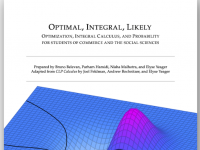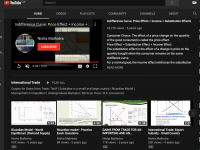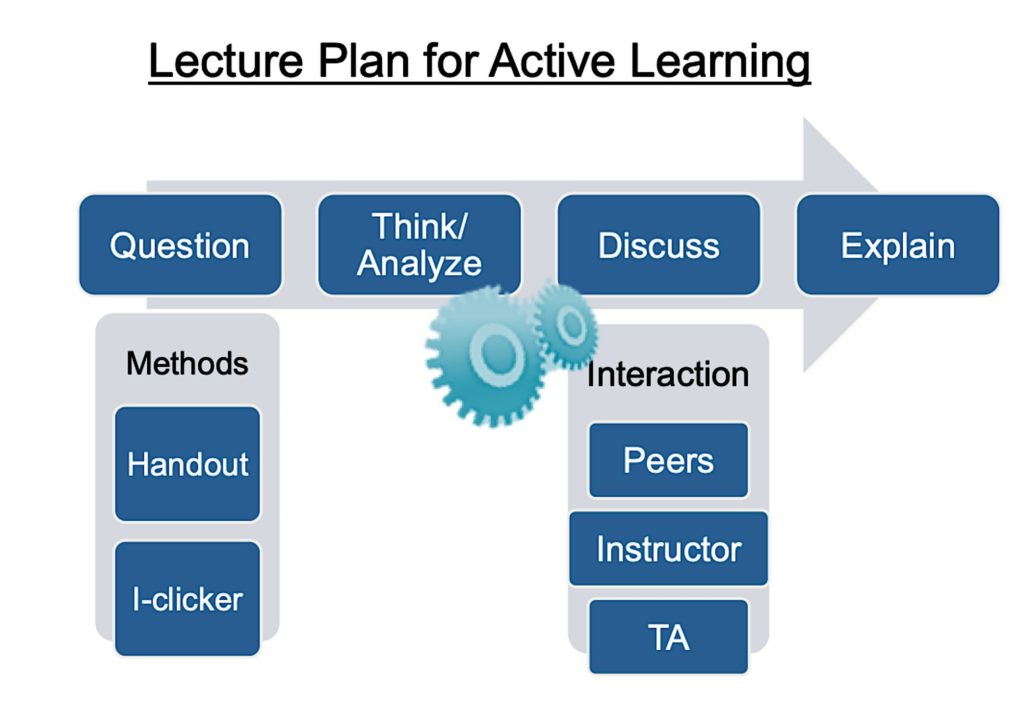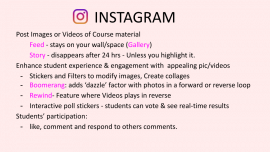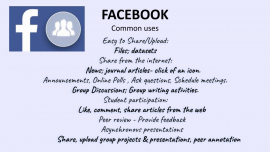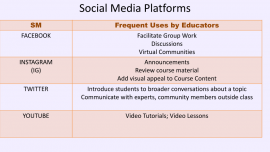.Enhancing Traditional Pedagogy
|
Community-Based ResearchAs part of UBC’s initiative to facilitate community-based research (UBC-CBR/CLI), this course offered research projects in participation with Community organizations. Whereas most undergraduate 4th-year economic curricula focus on theory or data analysis, Community-Based Research (CBR) lets students use their theoretical knowledge and analytical skills to help people in their own community. I was recognized for adopting a “pedagogical approach in partnering with diverse community organizations and enabling students to engage in community-based projects”
|
||
A Blended Approach to Learning
|
||
A Blended Learning Course: Introduction to Microeconomics
VSE’s first flexible learning course Introduction to Microeconomics, which incorporates active learning to replace 15% of traditional lectures with digital content. 2013. Using adapting Blended Learning aimed to enhance students’ educational experience by incorporating more active learning in the classroom. A percentage (roughly 15%) of traditional lecture-style classes were substituted with asynchronous video tutorials. This increases class time for problem-solving and student discussions.
|
||
Open Education Resources (OER)
–Optimal, Integral, Likely: Optimization, Integral Calculus, And Probability For Students Of Commerce And The Social Sciences, By B. Belevan, P. Hamidi, N. Malhotra, And E. Yeager, Open-Source Textbook, Cc By-Nc-Sa 4.0), 2021. [Link] –Study Practice Guide: Optimal, Integral, Likely: Optimization, Integral Calculus, And Probability For Students Of Commerce And The Social Sciences, By B. Belevan, P. Hamidi, N. Malhotra, And E. Yeager, Open-Source Textbook, Cc By-Nc-Sa 4.0), 2021. [Link] –Online resources Statistics, Econometrics and Research Methodology for students and faculty in economics, political science, and related fields. Data with STATA [Link to the website] –An online resource repository for Microeconomics: lectures, pre-lecture quizzes, peer assessments, etc. for ECON 101 [Link to the Website] _ |
Publications
Asynchronous Video: A Powerful Way to Teach, Present, and Communicate with Students, Online Course Delivery and Instructions, 14th June 2021.

A screencast generally consists of a recording of the computer screen, along with the instructor’s commentary. Although easy to produce, this visual and auditory format is an excellent way to narrate presentations, explain concepts, answer students’ questions, and demonstrate how to use software and navigate websites. In addition, screencast videos have been shown to help students gain a deeper understanding of the material and also to enhance their engagement with the course content. Many theories provide the basis for developing and using screencast tutorial videos as a pedagogical tool in online courses. One such theory is the cognitive theory of multimedia, which explains the benefits of integrating education with multimedia for online learners, especially through screencasting’s audio-video format. An empirical study by Lloyd and Robinson (2012) compared the effectiveness of text tutorials and screencasts. It showed that screencasts were a more effective learning tool for imparting higher-order, conceptual knowledge. The authors attributed their success to the dual learning channels (i.e., visual and verbal processing) that screencasts provide. (Link to the Article) |
|
Implementing Active Learning and Student-Centered Pedagogy in Large Classes, Blended and Flipped Learning, Faculty Focus, Nov 27th, 2019. |
|
| Reducing the vast number of theories down to adaptable elements for my economics courses was a trial-and-error process. Did I struggle with time and questions such as: How much class time should be devoted to active learning and participation? Should this be at the expense of course content? Given that first-year undergraduate economics courses are mostly preparatory for advanced economics classes, the content of these courses is not up for debate, and none can be sacrificed. The solution was to use a blended learning approach: modifying the course structure, introducing online videos for review, and changing how the content was delivered in class.
|
|
Experimenting with Facebook in the College Classroom, Teaching with Technology, Faculty Focus, June 10th, 2013 |
|
 The participation and discussion rates were higher than ever, and more problem-solving and other requests were made for help with the course. This module helped me achieve what face-to-face, three-hour-a-week interaction could not. Therefore, I have made this technology a permanent feature in my course. However, next semester, we will have a closed Facebook group. This is what I have learned: The participation and discussion rates were higher than ever, and more problem-solving and other requests were made for help with the course. This module helped me achieve what face-to-face, three-hour-a-week interaction could not. Therefore, I have made this technology a permanent feature in my course. However, next semester, we will have a closed Facebook group. This is what I have learned:
As for the benefits of creating a Facebook group for your course, I see better online interactions and face-to-face discussions and a fantastic way to get mid-semester feedback from the students. (Link to the Article) |
|
Seminars in Applied Research Methods: Designing Instructional Strategies for a Seminar Course, Syllabus Journal (2013) |
|
| To research social issues, students must understand human behaviour, culture, and socioeconomic foundations. Peer discussions, which often generate positive externalities, can lead to a greater understanding of the costs and benefits of various policies and behaviours (Van Den Berg, Admiraal, & Pilot, 2006). While the professor and students interact mostly at the individual level, peer discussions are at the individual level, in small group settings, or large groups.
Another decision I struggled with was the assessment of class participation/discussion: how to grade students anxious about public speaking or who are shy. Having a place to post comments and participate without the public eye – should be helpful and encourage involvement (Larson, B.E. & Keiper, T.A., 2002). ( Link to the Article) |
|
Workshops and Presentations
Using Social Media to Engage Students and Humanize Online Teaching Online Workshop Students, and everyone for that matter, are more accustomed to the world of social media than ever before. An average student spends about 2 hours daily on social media sites (Perrin and Jiang, 2018). So, it would be an effective tool to incorporate it into our teaching strategies.
How can we leverage social media to engage our students? In this workshop, we will review the structure of various social media and discuss how we use social media to connect with students across various courses for resource sharing and peer learning.
We will also share analytics from Facebook, Twitter, YouTube, and Instagram to better understand how our students interact with our digital content.
In addition to exploring social media’s benefits, we will also look at some of its downsides: privacy concerns and general criticisms. We will conclude by identifying how to address these issues when we are ready to adopt social media in our teaching.
Active Learning Improving Student Engagement in Technology-Enhanced Classrooms: What Works, What Matters and Why? First presented at Centre for Teaching, Learning and Technology’s Summer Institute.
Evaluation strategies for a Blended learning Course (a flipped classroom) Summary: A discussion of course design for a fourth-year Research Seminar: To research social issues, students must understand human behaviour, culture, and socioeconomic foundations. Peer discussions, which often generate positive externalities, can lead to a greater understanding of the costs and benefits of various policies and behaviours (Van Den Berg, Admiraal, & Pilot, 2006). While the professor and students interact mostly at the individual level, peer discussions are at the individual level, in small group settings, or in large groups. [Link] |

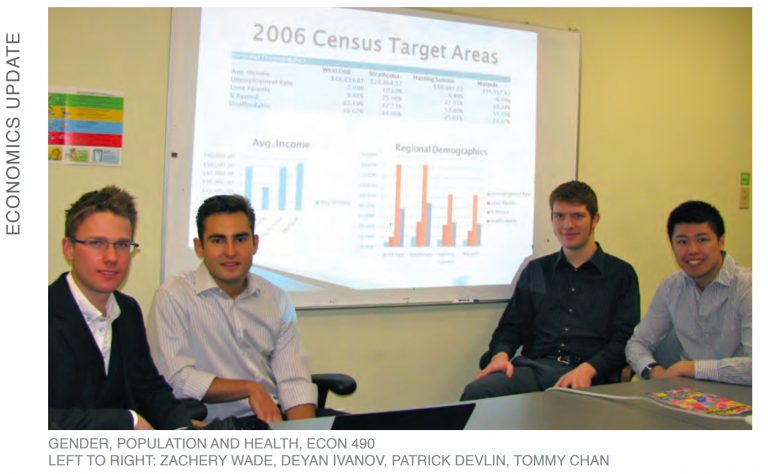 Last year’s Occupy movement prompted many of us to re-evaluate our assumptions about poverty. At UBC, four students in Dr. Nisha Malhotra’s Economics 490 class—Gender, Population and Health—took that evaluation one step further. As part of
Last year’s Occupy movement prompted many of us to re-evaluate our assumptions about poverty. At UBC, four students in Dr. Nisha Malhotra’s Economics 490 class—Gender, Population and Health—took that evaluation one step further. As part of 
